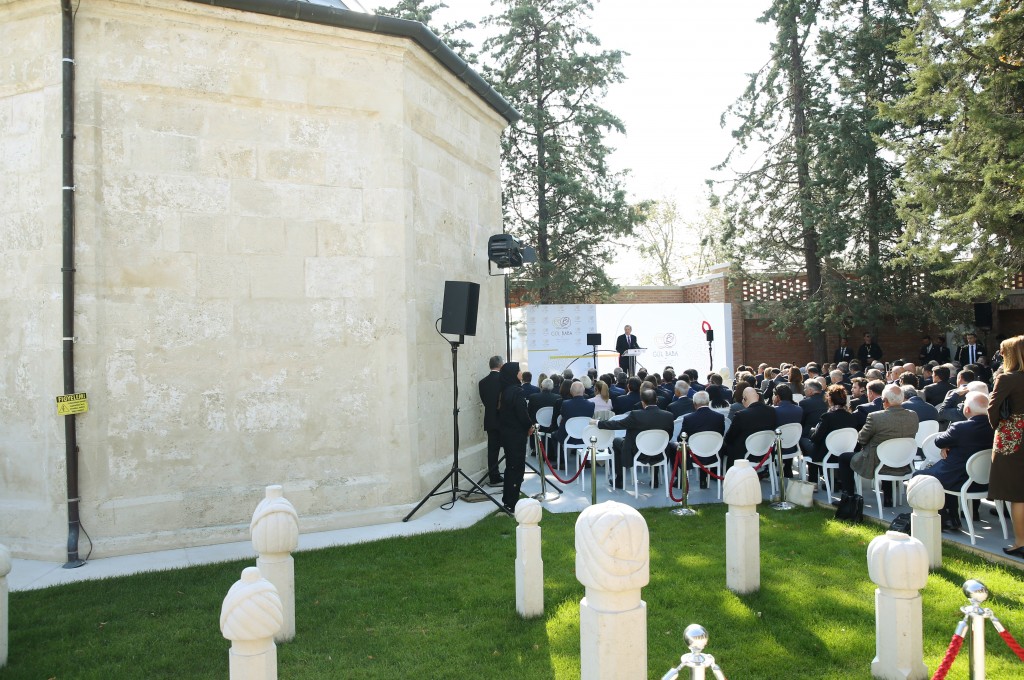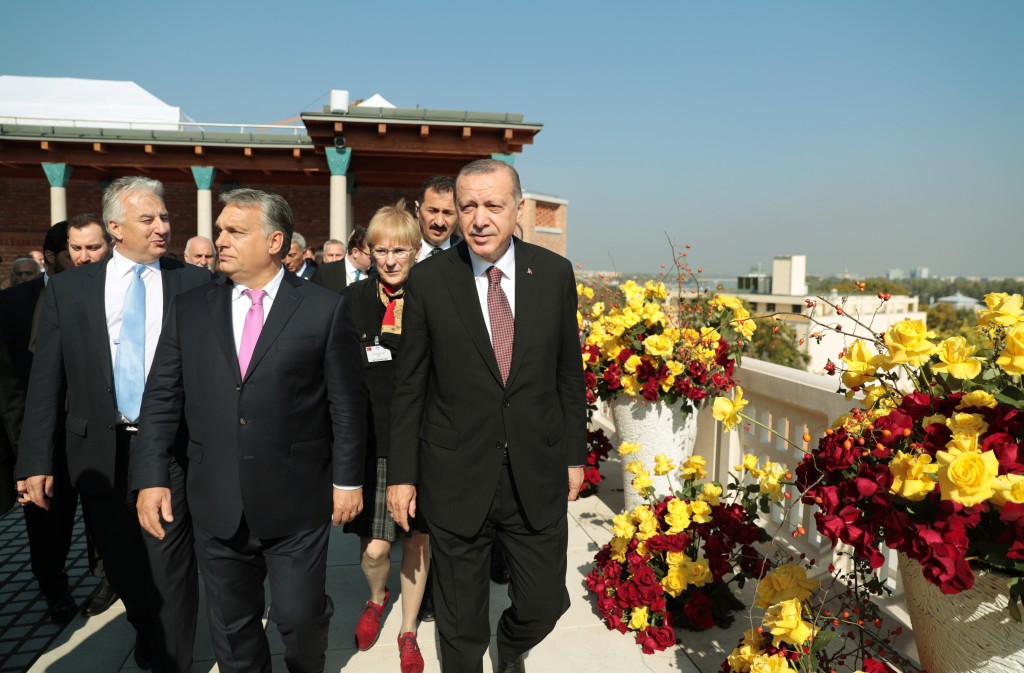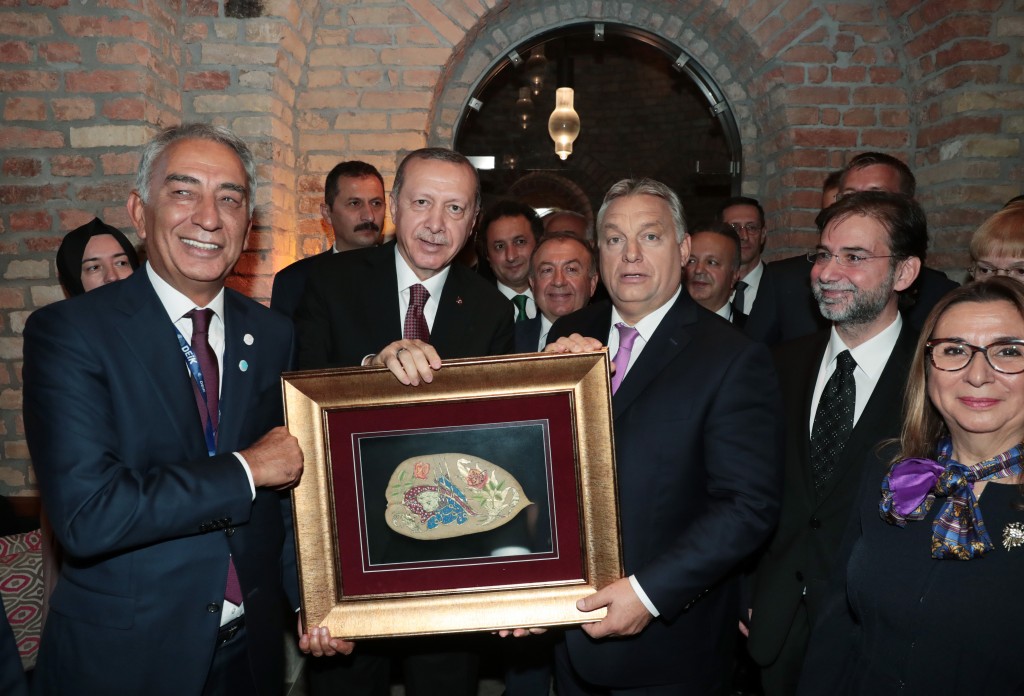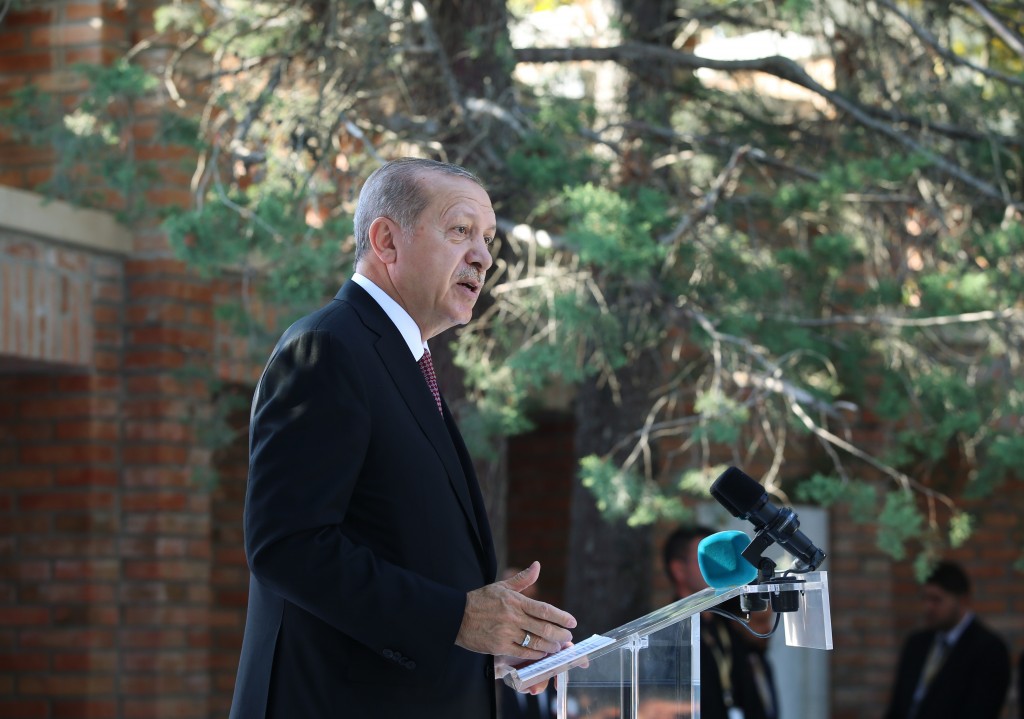News
16 October 2018Our President Inaugurated the Tomb of Gül Baba in Hungary
During his official visit to Hungary, President Recep Tayyip Erdoğan inaugurated the Tomb of Gül Baba, which was restored by TİKA through a collaboration between Turkey and Hungary and its Museum project.

A symbol of Turkish-Hungarian friendship, the “Spiritual Guardian of Buda” the Tomb of Gül Baba was restored by TİKA.
Click on the photograph to view the Gül Baba Tomb and Museum in 360 degrees.
TİKA continues to build bridges between the two countries with important projects in Hungary such as the restoration of the Tomb of Gül Baba, investigation of Suleiman the Magnificent’s missing burial ground, and the restoration of the Turkish-Hungarian Friendship Park.
Attending the inauguration of the Tomb of Gül Baba with Hungarian Prime Minister Viktor Orban and speaking during the ceremony, President Erdoğan said that this is an important visit for the relations between the two countries and that they are inaugurating a symbol of the centuries-old friendship between the Turks and Hungarians. President Erdoğan said Gül Baba, who was a Bektashi Dervish named after the roses he carried in his headgear, died on this hill 477 years ago and he came to be known all across Hungary as the values he represented and the traits he symbolized attained more importance. –
President Erdoğan stressed that the name Gül Baba has become synonymous with values such as fidelity, courage, justice, respect and love, and he continued, “We cannot just see this tomb, which stands the test of time, as a memento from our ancestors reminding our shared history. Gül Baba is more relevant to the present and the future rather than the past. To all his visitors, Gül Baba calls out from the depths of the history and reminds them that the well-being of humanity depends on mutual respect, understanding and friendship between different cultures. Gül Baba is a symbol of love, peace and solidarity triumphing over hate, conflict and selfishness.”
President also remarked, “Although Gül Baba is not here physically, he lies here with his name, his memory and his wisdom. With the respect, attachment and love he invokes in Turkey and Hungary, Gül Baba continues to be a marker of truth in this beautiful garden where he lies among the roses. Hopefully, with his legacy, Gül Baba will remain a symbol of the friendship between the two nations for centuries to come.”
President Erdoğan also cited how Evliya Çelebi and various travelers visiting the tomb at various times said that Hungarian people looked after the Tomb of Gül Baba very well and he said that this diligence, care and respect made it possible for the Tomb of Gül Baba to overcome many hardships and survive to this day with all its beauty and splendor. –
President Erdoğan expressed that they are happy to have completed a different and robust restoration project and said, “I believe that this holy site will be protected diligently by the future generations and it will stand as one of the most valuable symbols of the Turkish-Hungarian friendship. This final restoration project undertaken with the great support of Turkish Cooperation and Coordination Agency and in cooperation with the Hungarian administration provided a brand-new outlook and aesthetic value for the tomb. The tomb complex attained a very different and striking look thanks to the landscape work and interior designs. I believe that this project which successfully brings together tradition and modernity, multiplies the beauty of the Danube and the splendor of Budapest.”
President Erdoğan also pointed out that the Tomb of Gül Baba is not the sole example of our shared historical and cultural heritage in Hungary, and that there are many works that represent the ancient friendship, solidarity and shared history between the two countries. The President mentioned that there are many historical structures dating back to the Ottoman period in the cities like Szigetvar, Pecs, Eger, Silos, and he said, “By protecting these works, Hungary not only looks after its own history but also after the shared cultural heritage of humanity and it sets a great example for many other countries. For their approach, I thank Prime Minister Orban and the government of Hungary on behalf of myself and my nation. We, as Turkey, have provided robust support to Hungary in their efforts and we will continue to do so. In this period we are going through, as the threats against regional peace and stability increase, our cooperation becomes even more meaningful. Against those who try to pit people against each other by pressing religious, ethnic and cultural differences, we will adopt the sacred legacy of Gül Baba and speak the language of solidarity. Just as Gül Baba did 500 years ago, we will sow seeds of love in these lands instead of seeds of conflict.”
Our President added, “Turkish-Hungarian cooperation will continue to take root under the spiritual guidance of Gül Baba. I hope the Tomb of Gül Baba we are inaugurating today brings good luck and fortune to the people of Hungary and Budapest. I also hope that this monumental work helps enhance the ties of friendship between the two countries even further.”
Located in the region called the Rose Hill (Rozsadomb) in Budapest, the capital city of Hungary, the Tomb of Gül Baba was restored through a Turkish-Hungarian collaboration after the protocol that was signed in 2014. The restoration covered the repairs of the tomb, interior design and landscaping work. Moreover, a new Gül Baba Museum was built next to the Tomb.
Gül Baba, the “Spiritual Guardian of Buda”
Gül Baba, whose real name was Jafer, was a Bektashi dervish from the Veli Baba Lodge. He was called Gül Baba wherever he went. He guided people, joined expeditions and attained fame.
Suleiman the Magnificent called for this bold and courageous dervish and invited him to Hungary. Serving as a guiding light for the army, Gül Baba joined the Buda Expedition. He died on September 2, 1541. He was buried in Hungary where his tomb is located today. A tomb was built on his burial ground on the Rose Hill. Later a dervish lodge named after him was founded next to his tomb.
The Tomb of Gül Baba went through various changes and periods over the centuries. The Tomb and Gül Baba’s precious memory was protected and looked after for centuries as a symbol of Turkish-Hungarian friendship.
The Tomb of Gül Baba was registered as a historical monument in 1914 and it was opened to visitors as a museum after 1962.
The Restoration Process for the Precious Memory of Gül Baba
“International Architecture Camp” that was organized in 1987 considered the site as a potential study area, offered some suggestions but no work was implemented. Despite the efforts over the next years, TİKA observed fundamental deficiencies and damages in the historical structure and started the restoration project in 2016 after performing a wide scale examination on the site. As a result of the restoration activities started by TİKA in 2016, with a team consisting of Turkish and Hungarian experts, the tomb’s renovation, interior repairs and landscaping works were completed.
Gül Baba Museum
As TİKA completed the restoration efforts to protect the historical heritage, a museum was built to promote our historical values. In order to transform Gül Baba Museum into a lively cultural center, a cafeteria and museum were planned for the visitors and meeting rooms and a multi-purpose hall were prepared to host various events and meetings.
Gül Baba street located right next to the tomb was renewed in an authentic manner. The statue of Gül Baba located at the entrance of the tomb was retained and placed on a new pedestal.
Thanks to the efforts, which were started following our President Recep Tayyip Erdoğan’s discussion during his own Prime Ministry with Hungarian Prime Minister Viktor Orban, Gül Baba will remain a symbol of Turkish-Hungarian friendship and his legacy will be passed on to the future generations.
To get the promotional booklet on the Restoration of the Tomb of Gül Baba and its Museum please click here.
Next News

TİKA Opens a Library and a Playground at a Girls’ School in Pakistan
Turkish Cooperation and Coordination Agency (TİKA) built a library and a playground at Gharibabad Girls’ School in Pakistan. Implementing important projects in Pakistan, TİKA built a library and a playground at Gharibabad Girls’ School located...



















